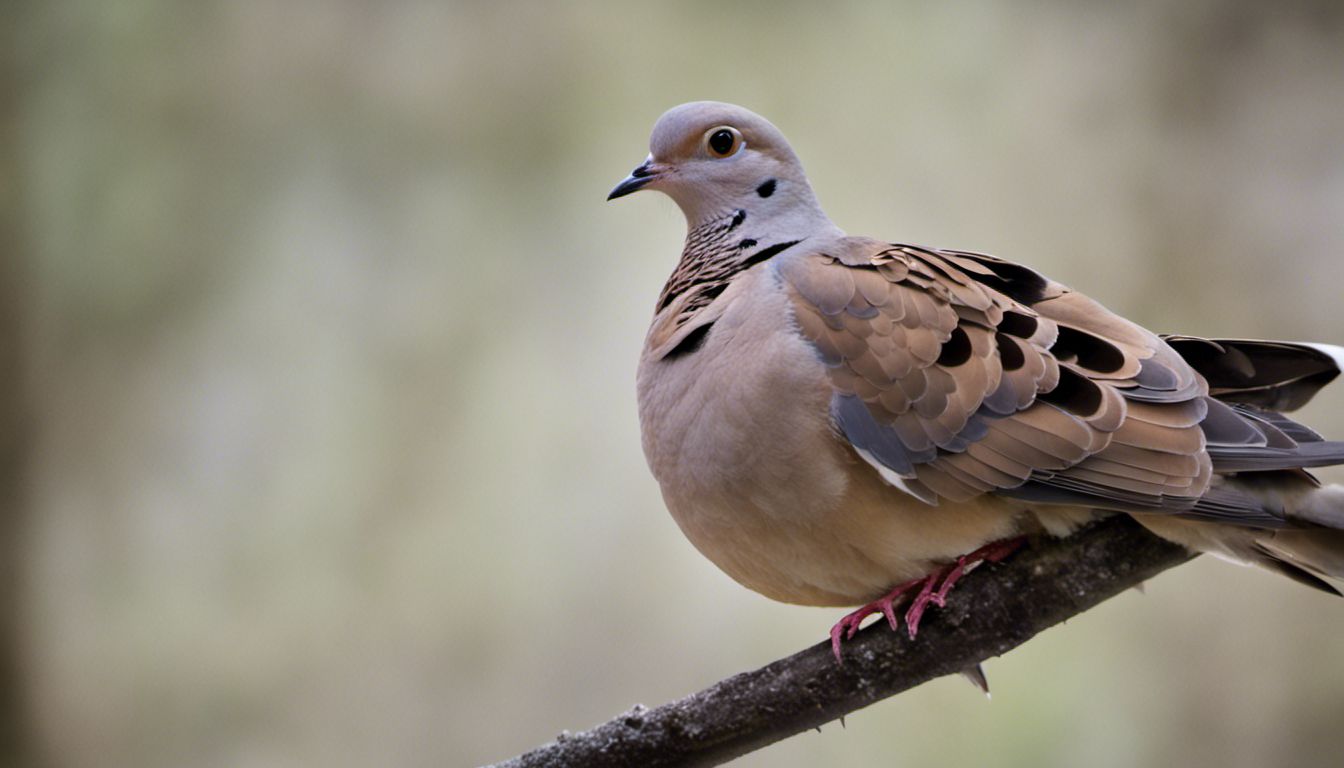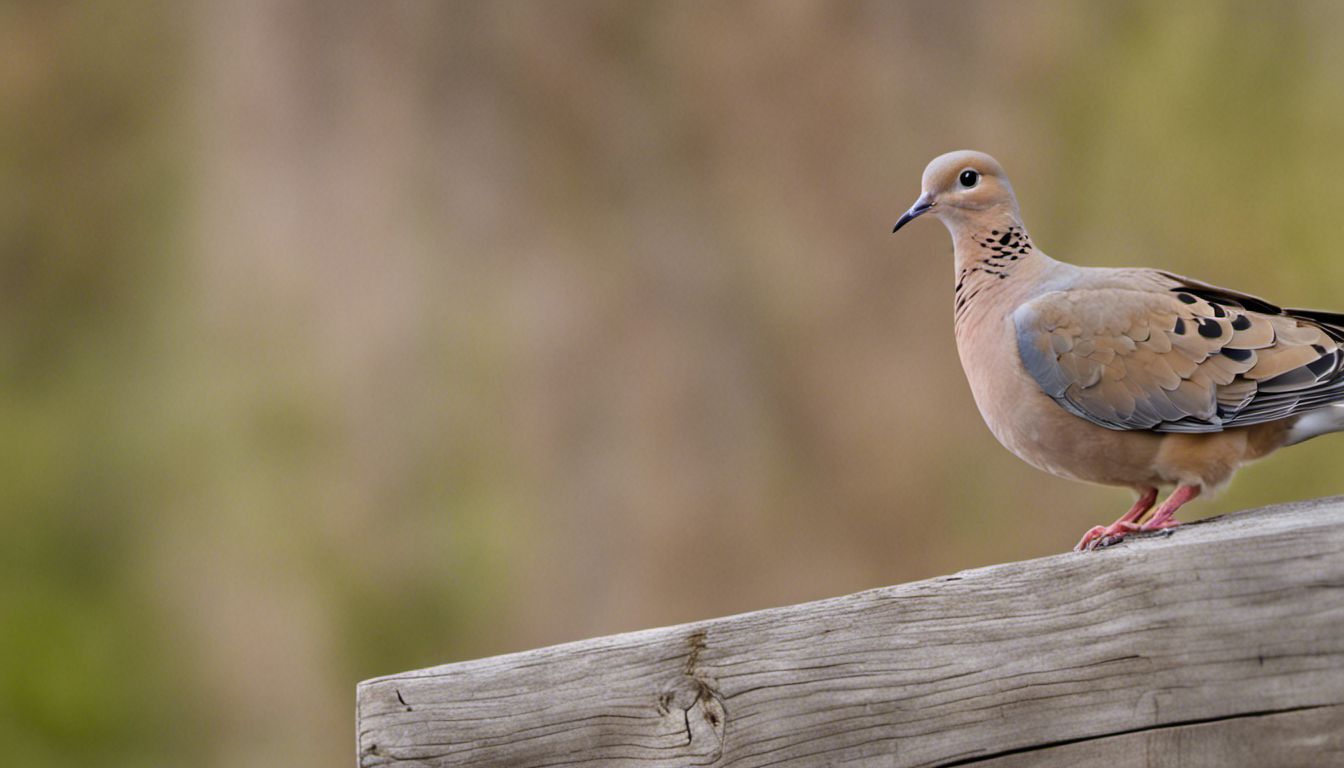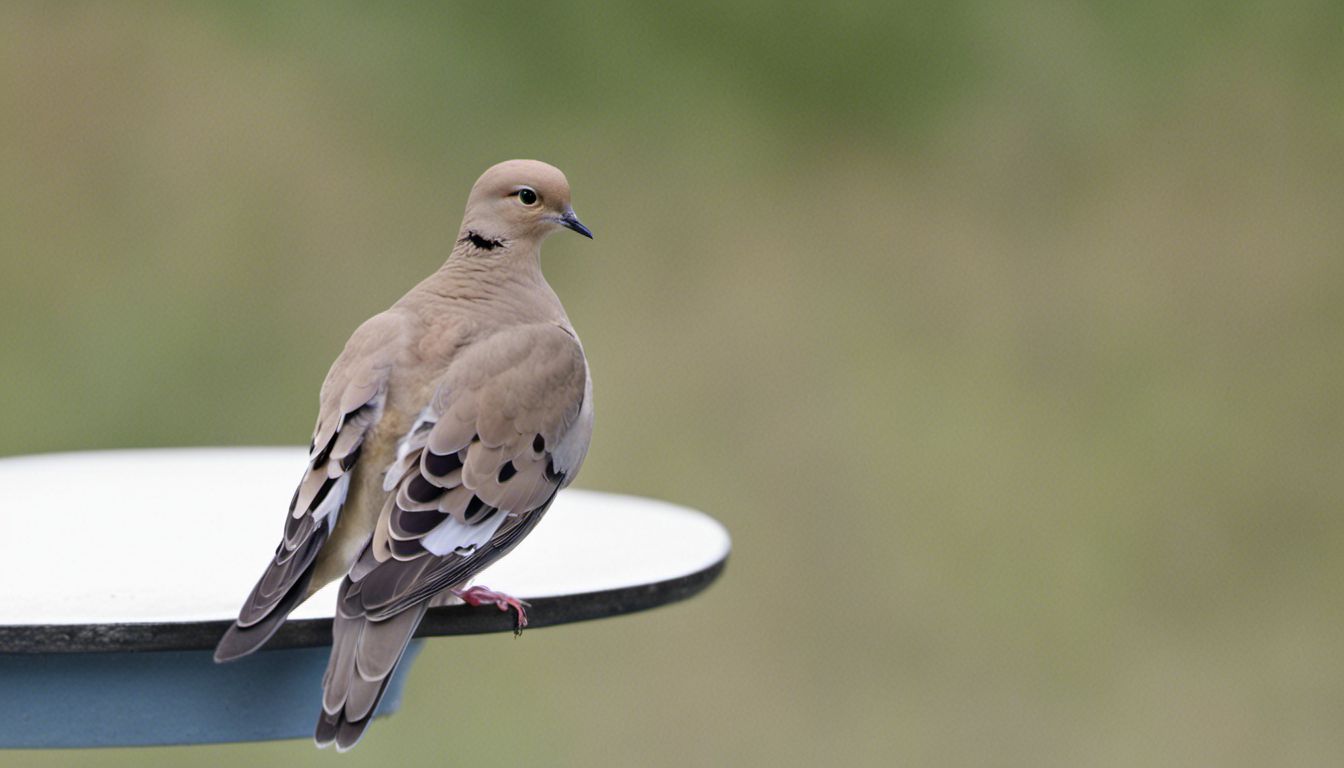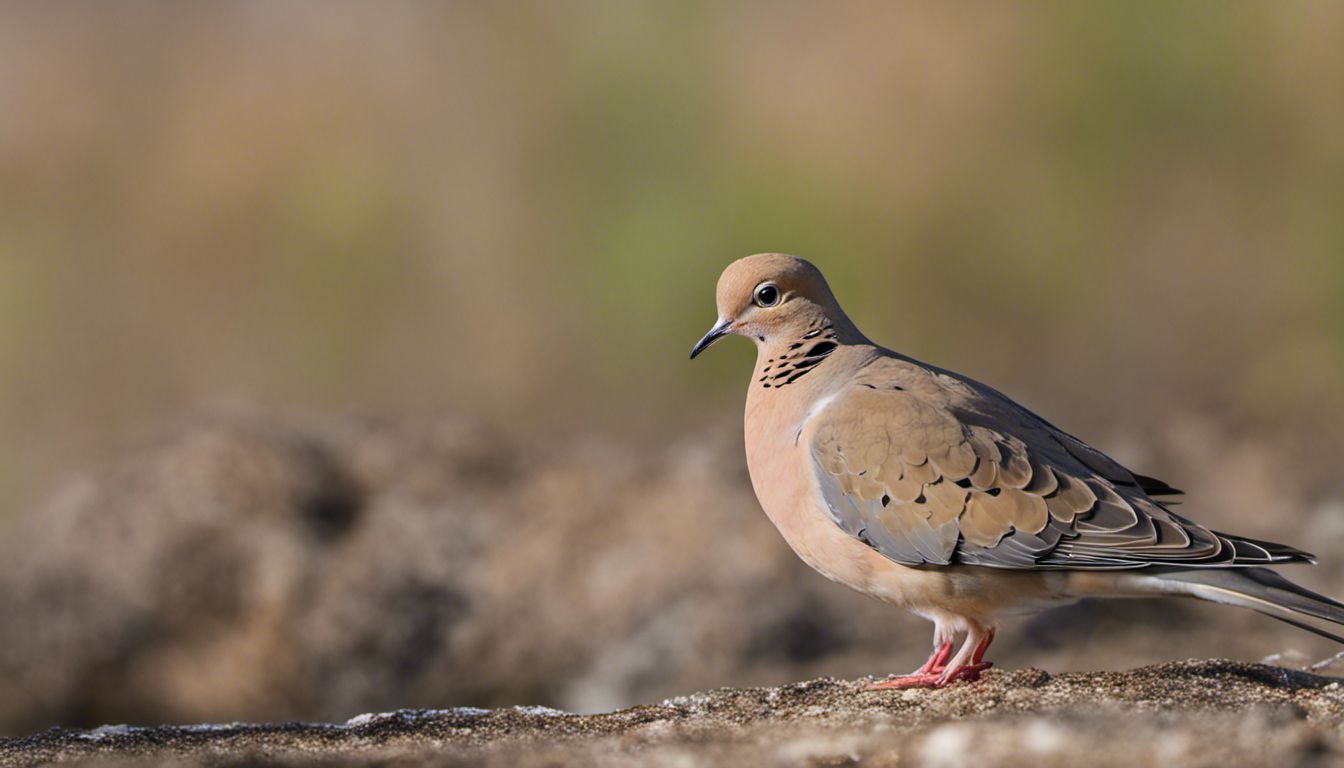A Mourning Dove often makes a soft, mournful low-pitched cooing sound and a high-pitched, distinct wing whistle when it takes flight. These sounds are unique to Mourning Doves and are typically used for communication and mating purposes.
- The Distinctive Sounds of Mourning Doves: Unlike most birds, Mourning Doves aren’t known for their catchy tunes, instead, their voice is a mournful, soft and low-pitched coo, which is also how they’ve earned their name.
- Understanding Mourning Dove Calls: The cooing sound of Mourning Doves serves as a means of communication between the birds, it is primarily used during mating season when males try to attract females with their sorrowful coo.
- The Unique Wing Whistle of Mourning Doves: Aside from the cooing sound, Mourning Doves have another distinctive sound – a high-pitched, whistling sound made by their wings when they take flight. This sound is unique to them and is not observed in any other species.
1. The Distinctive Sounds of Mourning Doves

In the world of avian, Mourning Doves hold a unique place with their distinctive cooing sounds. Unlike the chirpy and melodious songs of other birds, these creatures communicate via a soft, plaintive call that has a mournful tone to it. The cooing of Mourning Doves has not only earned them their name, but it also sets them apart from other bird species.
- The primary sound made by Mourning Doves is a soft, low-pitched cooing. This distinctive call is often drawn out and has a melancholic quality to it.
- Mourning Doves use their cooing to communicate with each other, and it is often heard during the early morning and evening hours.
- Although often associated with sadness due to its mournful tone, the cooing of Mourning Doves is a natural part of their communication method and behavior.
2. Understanding Mourning Dove Calls

Dipping into the realm of Mourning Doves communication, the bird’s calls serve specific purposes and convey distinct messages. Understanding these calls can provide fascinating insights into their behavior and the intent behind their sounds.
- Nest Call: This is a soft, murmuring coo made by the male to entice the female to a chosen nest site. It’s typically quieter and more soothing than other calls.
- Perch Call: While sitting on a perch, males often make a loud, emphatic five-part coo to attract females or declare their territory. This is one of the more distinctive and recognizable Mourning Dove sounds.
- Alarm Call: When startled or feeling threatened, Mourning Doves produce a soft, but quick and high-pitched coo. It acts as an alert to other doves in the area of potential danger.
3. The Unique Wing Whistle of Mourning Doves

In addition to their famous coos, Mourning Doves are noted for another auditory trait: their wing whistle. This unique sound stems from the action of their wings during flight, creating a high-pitched, eerie whistle that’s hard to miss.
- Wing Whistle: This signature sound is made when Mourning Doves take flight quickly, usually when they are spooked or threatened. The air rushing through their wing feathers produces a sharp, whistling sound.
- It’s not exactly a call, but the wing whistle can serve a similar purpose as an alarm call, alerting other doves to a potential threat.
- Not all Mourning Doves create this sound. Factors like the bird’s age, sex, and physical condition can affect whether or not it’s capable of producing a wing whistle. Regardless, when you do hear it, it’s an unmistakable part of the unique audio repertoire of these birds.

